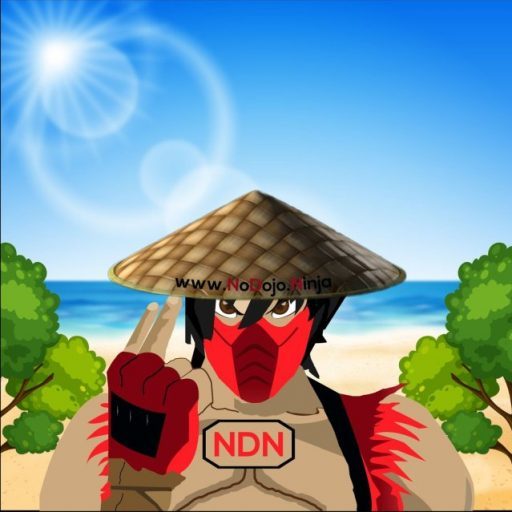The history of the ninja is shrowded with mystery, but as we practise and obtain knowledge about the 9 schools of the Bujinkan, we uncover their influences therefore history, especially through the last surviving Ninjutsu school of Togakure’s 18 skills.
The 18 skills strongly influence the curriculum of Takamatsu Den, and again seem to have nothing to do with Ten Chi Jin.
History
Ninjustu comes from: Nin (that who survives / perseveres) Jutsu (art).
Ninjutsu basically comes from 3 groups of people:
1) Samurai that did not want to commit Hara Kiri (suicide for loosing a battle). From them come most of the schools, developed from Chinese arts. The Samurai are based on Zen (Japanese, from Zenji) Buddhism, which basically makes them Zen Buddhist monks. This is where elements of karate must have come, especially of Koto ryu. However, Zen Buddhism is basically Buddhism (the essence of Sanatana dharma now called Hinduism) mixed with Shintoism. You can see that in the clapping rituals before training, the torii gates of divinity, and especially the shimenawa purification ropes at dojo entrances.
When the Samurai escaped, they became shinobi no mono (person that hides / steals away) and later became ninja (one who survives & endures). Some of them may have lost their daimyo (great land warlord) so became rōnin then ninja.
This is how Iga clan appears to have originated as it more related to Samurai, which is currently Bujinkan (divine warrior house) Budo (art of war) Taijutsu (body art).
2) Shaolin monks, from them especially come the Koto and Gyoko schools, which show signs of Shaolin Kung Fu. This is rooted in Chinese Buddhism of Bodhi Darma. You can especially see this in the tabi boots especially how they cover the pants, the color black similar to grey, and how a lot of Ninjutsu practitioners fully shave their heads.
This is how Koga clan seems to have originated as Shaolin were already influenced by Sun Tzu of Taoism to create the Lin Kuei who also were involved in stealth strategies and tactics for various reasons such as rescue missions or intelligence gathering.
Yamabushi (yama is mountain, bushi is warrior) clan similar to Shaolin monks (they probably were Shaolin refugees). From them the concept of the 5 elements of earth (chi), water (sui), fire (ka), air (fu), and ether (ku) in meditation, posture, and movement came about.
3) Fuma clan appear to be most linked to Taoism (especially Sun tzu) as it is about guerilla warfare by attacking at strategic times in weak places usually on horse back after stealthful arrival usually via boat.
Sun tzu (meaning master Sun) of Art of War linked to Lao Tzu (meaning old master) of Taoism found its way to establish Ninjutsu brought in elements of Taoism (especially Tai Chi Chuan) aside from stealth strategies and tactics. This also appears to be most linked to Fuma clan involved guerrilla warfare (small groups attacking with stealth and speed at sensitive places in sensitive times).
Sun tzu advocated that the best general of any army is a Taoist master, and preached that the war of the mind is far greater than the war of the body. In other words, he advocated that preventing a war before coming to fists (or swords, or bombs) is far superior than winning it.
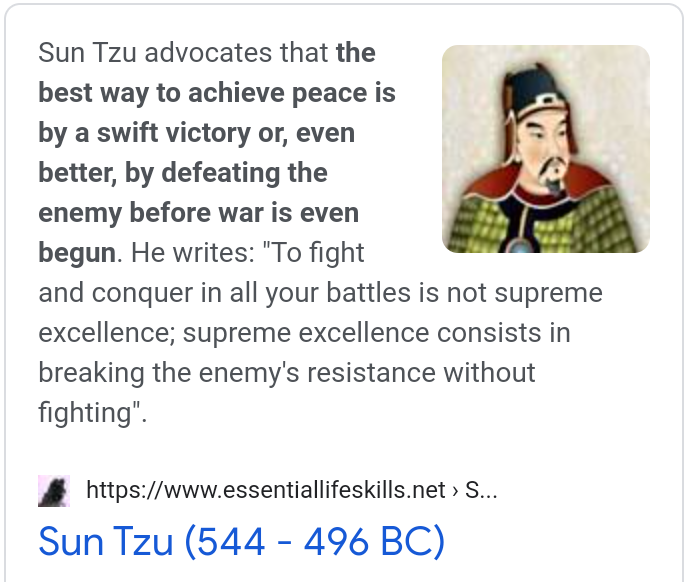
The 3 clans that constituted the Ninja are: Iga & Koga (currently a city each) and Fuma. Koga and Fuma were not as head-on and preferred spycraft, sabotage, and assassination, especially Fuma that preferred carefully planned guerilla warfare via ambush usually using a small group of skilled fighters on horses or boats that attack together at strategic times and locations. It is more strategy based than Koga that included a lot of spiritual & physical conditioning needed for scaling and combat. The Sengoku Period (15th to 16th century) was the golden age of ninja in Japan. Ninjutsu reportedly exists in China as Lin Kuei.
Ninjutsu however remained having a negative perception due to the Japanese media since they were considered dishonorable. It was also tainted by Western media through glamorization for profit (e.g. magick and assassins). It was so tainted that most Japanese stil believe it to be a tale to scare the children. This is why Masaaki Hatsumi changed its name to Bujinkan Budo Taijutsu.
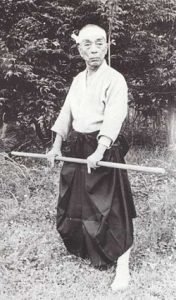
After the death of Takamatsu (the last real Ninja) in 1972, Hatsumi, the current grand-master, started to make it public in 1973 as Bujinkan. However, by 1982, he realized how the west used it for different purposes than intended, and that is enlightenment. It was being used more so to make money especially by the aid of the internet (e.g. Ninjutsu.com) especially by selling bogus ranks & teaching certificates online.
Therefore, he stopped making it easy to learn especially by Western foreigners, who are accustomed to materialism, and do not even have much regard to spirituality as in Asia. He then developed an illusionary system called Tenshijin, and made it more mysterious through his attitude and strict usage of the Japanese language.
Ninja were not necessarily assassins, but ordinary people with strong spiritual aspirations, a disciplined training regimen, a natural life style aiding them with their abilities, health, & longevity, and superior intuition & intelligence strongly enabling their mission success despite of difficult odds. However, some landlords (daimyos) hired them to assassinate other landlords, and even after the feuds, some of them used their knowledge & skill to earn money. They did not necessarily wear black, but were masters of stealth, deception, and disguise. Black is just a color to help one hide at night therefore aid with successfully completing missions by blending into the darkness nothing more.
===== ===== =====
Schools
Each ryu (school) covers a particular style. The most Chinese influenced schools are Koto and Gyoko. All schools are generally developed Chinese arts. Most are originally Samurai arts (6), and a few are originally Ninjutsu arts (3), of which only 1 we practise under Bujinkan Ninjutsu.
Here is some official information that I recommend on the schools of Ninjutsu:Koto, Gyoko, Kuki Shinden, Takagi Yoshin, Shinden Fudo, Togakure

- Koto (Tiger Knocking Down) (originally Samurai) (south China, some Karate) – strong blocks usually with some distance, koppojutsu (bone attacking), yoko aruki (sideways cross movement) & toe stamping
- Gyoko (Jewelled Tiger) (originally Samurai) (south China, some Wing Chun) – close up usually with absorption, kosshijutsu (muscle attacks), kihon happo, go gyo no kata
- Kuki Shinden (Nine Demons) (originally Samurai) (many weapons, armour, shizen no kamae) – most weapons, seamen, 9 refers to 9 techniques in each katana, hanbo, and jo
- Takagi Yoshin (High Tree, Raised Heart) (originally Samurai) (grappling, throwing) – jutaijutsu (grappling)
- Togakure (Hidden Door) (originally Ninjutsu) – low hiding lots of rolls, philosophy & strategy, nature, secret weapons: shuriken & shuko & fukiya
- Shinden Fudo (Immovable Heart) (originally Samurai) (north China, some Tai Chi) – dakentaijutsu (strikes) & jutaijutsu (grapples), axe, hammer, spear, halberd, rope-restraint
- Gikan ryu (Truth, Loyalty, Justice) (originally Samurai) – special kicks punches throws
- Kumogakure ryu (Hiding in the Clouds) (originally Ninjutsu) – hooked spear climbing, demon mask, armored sleeves, jumping-combat
- Gyokoshin ryu (Jewelled Tiger Heart) (originally Ninjutsu) – sutemi throws, espionage, lasso
7, 8, 9 have no densho (historical documentation), and we generally do not practise them under Bujinkan Ninjutsu because they were not passed on by Hatsumi. He possibly never learned them. They are for spying, stealth, poison, pyrotechnics (explosions).
In Takamtsu den: each kyu (before 1st dan / black-belt) takes the essentials from every school. In each kyu, a collection of attack, evasion, element-influenced counter-attack (striking and movement), and weapon (mostly counter-attack) techniques are covered. Each dan (starting with black-belt) covers each school (style) in detail.
All schools are practically Ninjutsu schools because they were all influenced by ninja sokes (grandmasters). For example Momochi Sandayû (Hattori Hanzō’s teacher) was 15th soke of Gyoko Ryu. Most importantly, Toshitsugu Takamatsu (the last ninja) was soke of all the schools.
===== ===== =====
Togakure Ryu – 18 skills
The Togakure ryu, established approximately eight hundred years ago, is now in its thirty-fourth generation. The ryu exists today as an organization dedicated to teaching effective methods of self-protection and promoting the self-development and awareness of its members. Due to the stabilized nature of contemporary Japanese government and judicial systems, the Togakure ninja ryu no longer involves itself directly in combat or espionage work. Pervious to the unificiation of Japan during the 16th century, however, it was necessary for the Togakure ninja to operate out of south central . At the height of the historical ninja period, the clan’s ninja operatives were trained in eighteen fundamental areas of expertise, beginning with this “psychic purity” and progressing through a vast range of physical and mental skills. The eighteen levels of training were as follows:
Seishin Teki Kyoyo (Spiritual Refinement)

The Togakure ninja worked at developing a deep and accurate knowledge of himself, his personal power, his strengths and weaknesses, and his influence on the playing out of life. The ninja had to be very clear about his intentions, his commitments, and his personal motivations in life. Personality traits could often mean the difference between life and death in his line of work. Exercises in mental endurance, ways of looking at things, and proper perspective when evlauating things, were taught to the ninja along with his physical skills. By evolving into a mystic’s understanding of the universal process, the historical Togakure ryu ninja became a warrior philosopher. His engagements in combat were then motivated by love or reverance, and not by the mere thrill of violent danger or need of money.
Here is some official information that I recommend about Togakure Ryu:Tai Jutsu (unarmed-combat art)
Skills of daken-taijutsu or striking, kicking, and blocking; jutai-jutsu or grappling, choking and escaping the holds of others, and taihenjutsu or silent movement, rolling, leaping, and tumbling asisted the Togakure ninja in life-threatening, defensive situations.
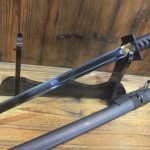
Kenjutsu (sword art)
The ninja sword, called ninjatō (忍者刀), ninjaken (忍者剣), or shinobigatana (忍刀) had a short straight single edged blade, and was considered to be his primary fighting tool. Two distinct sword skills were required of the ninja. “Fast Draw” techniques centered around drawing the sword and cutting as a simultaneous action. “Fencing” skills used the drawn sword in technique clashes with armed attackers.
Bo-Jutsu (staff art)
The Japanese stick fighting art, practiced by samurai and peasants alike, was also a strong skill of the ninja. Togakure ninja were taught to use the bo long staff (six feet) and hanbo “half-staff” cane (three feet), as well as sticks and clubs of varying lengths. Specially constructed shinobi-zue or ninja canes were designed to look like the normal walking sticks, but concealed blades, chains, or darts that could be used against an enemy.
Shuriken-Jutsu (throwing-blades art)
Throwing blades were carried in concealed pockets and used as harassing weapons. The Togakure ryu used a special four-pointed throwing star called a senban shuriken, which was constructed from a thin steel plate. The blade was thrown with a flat spinning motion and hit its target with a sawing effect. Bo shuriken or straight shaft darts and spikes were also constructed for throwing.
Yari-Jutsu (spear art)
Togakure ryu ninja agents were taught to use standard Japanese spears and lances as middle-range fighting weapons. Spears and lances were used for stabbing and piercing attacks, and rarely ever thrown in normal combat. The togakure ryu also used a unique spear weapon called a kami-yari, or “sickle lance”, which consisted of a spear blade with a hook at the base. The total length of the weapon was over nine feet. The lance point could be used to lunge and stab, and the hook point could be used to snag and pull the opponent or his weapon.
Naginata-Jutsu (halberd art)
Virtually a short blade mounted on a long handle, the Japanese halberd was used for cutting and slashing attacks against adversaries at medium range. Togakure ryu ninja warriors were also proficient with the bisen-to, a huge heavy-bladed version of the naginata halberd. Based on a chinese war tool, the broad-bladed weapon was heavy enough to knock down attackers, smash through armor, and ground the horses of mounted samurai.
KusariGama-Jutsu (chain-and-sickle art)
The Japanese chain and sickle weapon was adopted into the arsenal of the Togakure ryu ninja. A chain, six to nine feet in length and weighted at one end, was attached to the handle of the traditional grain cutting tool. The chain could be used to block or ensnare the enemy’s weapon, and the blade then used to finish off the attacker. The kyoketsu-shoge, a weapon similar to the chain and sickle, was favored by the togakure ryu. The weapon consisted of a straight hand-held dagger blade with a secondary blade hooking out from the hilt, attached to a fifteen foot resilient cord usually made from women’s or horse’s hair. A large steel ring was attached to the free end of the cord.

Kayaku-Jutsu (explosives art)
Ninja were experts in the effective placement, timing, and rigging of explosive devices for demolition and distraction. In later years, the use of black powders and other explosives was suplimented with knowledge of firearms and their strategic applications.
Henso-Jutsu (disguise art)
Essential to the ninja’s espeionage work was his ability to assume false identites and move undetected through his area of operation. More than merely just putting on a costume, ninjutsu’s disguise system involved thoroughly impersonating the character adopted. Personality traits, areas of knowledge, and body dynamics of the identity assumed were ingrained into the nijna’s way of thinking and reacting. He or she literally became the new personality, whether taking the role of a monk, craftsman, or wandering entertainer.
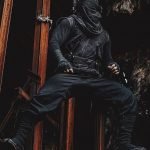
Shinobi-Iri (stealth-entering methods)
The ninja’s techniques of silent movement, breaking and entering, and gaining access to inaccessible areas became legends in feudal Japan . Togakure ryu ninja learned special walking and running methods for covering long distances, passing over floors silently, and for staying in the shadows while moving, in order to facilitate entry and escape.
Ba-Jutsu (horsemanship art)
Togakure ryu ninja were taught to be proficient on horseback, both in riding and mounted combat skills.
Sui-Ren (water training)
Stealth swimming, silent movement through water, methods of using special boats and floats to cross over water, and underwater combat techniques were taught to Togakure ryu ninja.
Bo-Ryaku (strategy)
Unconventional tactics of deception and battle, political plots, and advantageous timing for use of current events were used by Togakure ryu ninja. By employing or influencing seemingly outside forces to bring the enemy around to doing what the ninja wanted him to do, ninja were able to work their will without drawing undue attention to themselves.
Cho Ho (espionage)
Methods of successful espionage were perfected. This included ways of locating and recruiting spies and served as a guide for using espionage agents most effectively.
Inton-Jutsu (escape-concealment art)
Ninja were experienced masters in the ways of using nature to cover their exit, allowing them to “dissapear” at will. The goton-po five elements of escape were based on a working familiarity with the creative use of earth, water, fire, metal, and wood aspects of nature and the environment.
Ten-Mon (meteorology)
Forecasting and taking advantage of weather and seasonal phenomena was an important part of any battle consideration. Ninja were trained to observe all the subtle signals from the environment in order to predict weather conditions.
Chi-Mon (geography)
Knowing and successfully using the features of the terrain were crucial skills in the historical art of ninjutsu.
Based on: http://www.ninjutsu.org.uk/the-18-skills-of-the-togakure-ryu-ninja.html
Online (& offline) updated, personalized, & guided video-based courses with weekly live-video feedback & community membership are available @ https://www.ko-fi.com/mowrow/commissions.
Remember to subscribe via the form below or on the right for updates & promotions!
